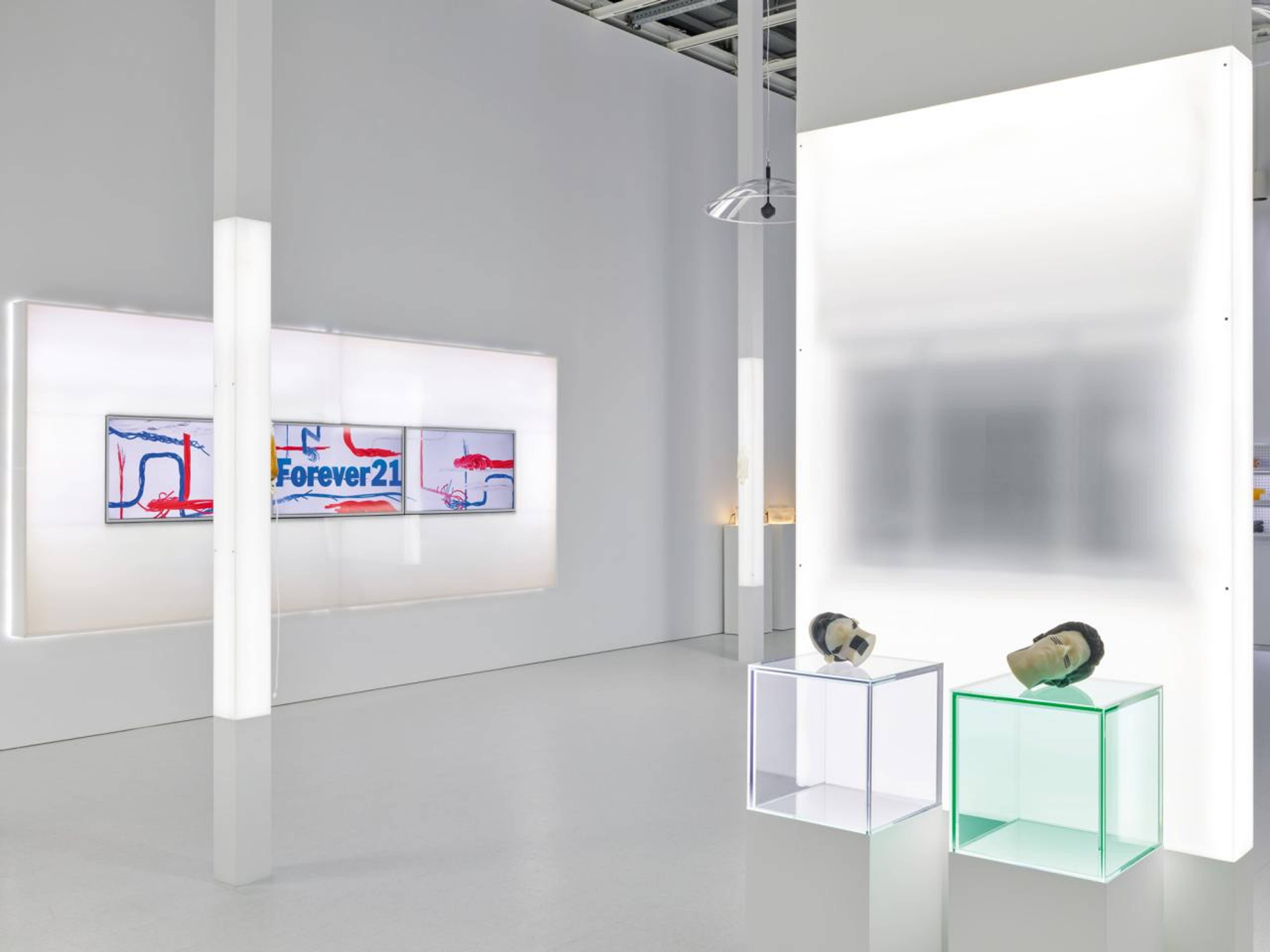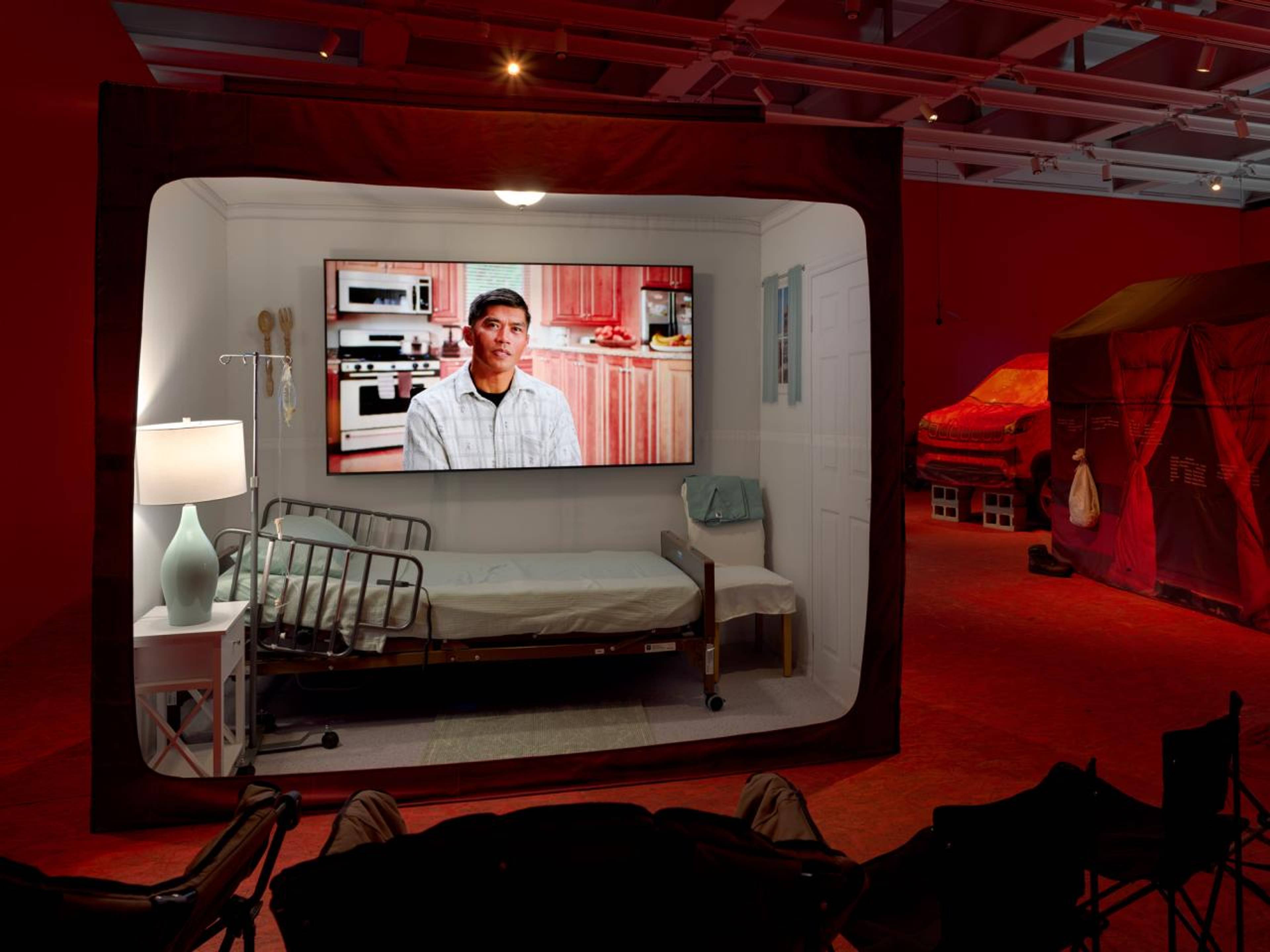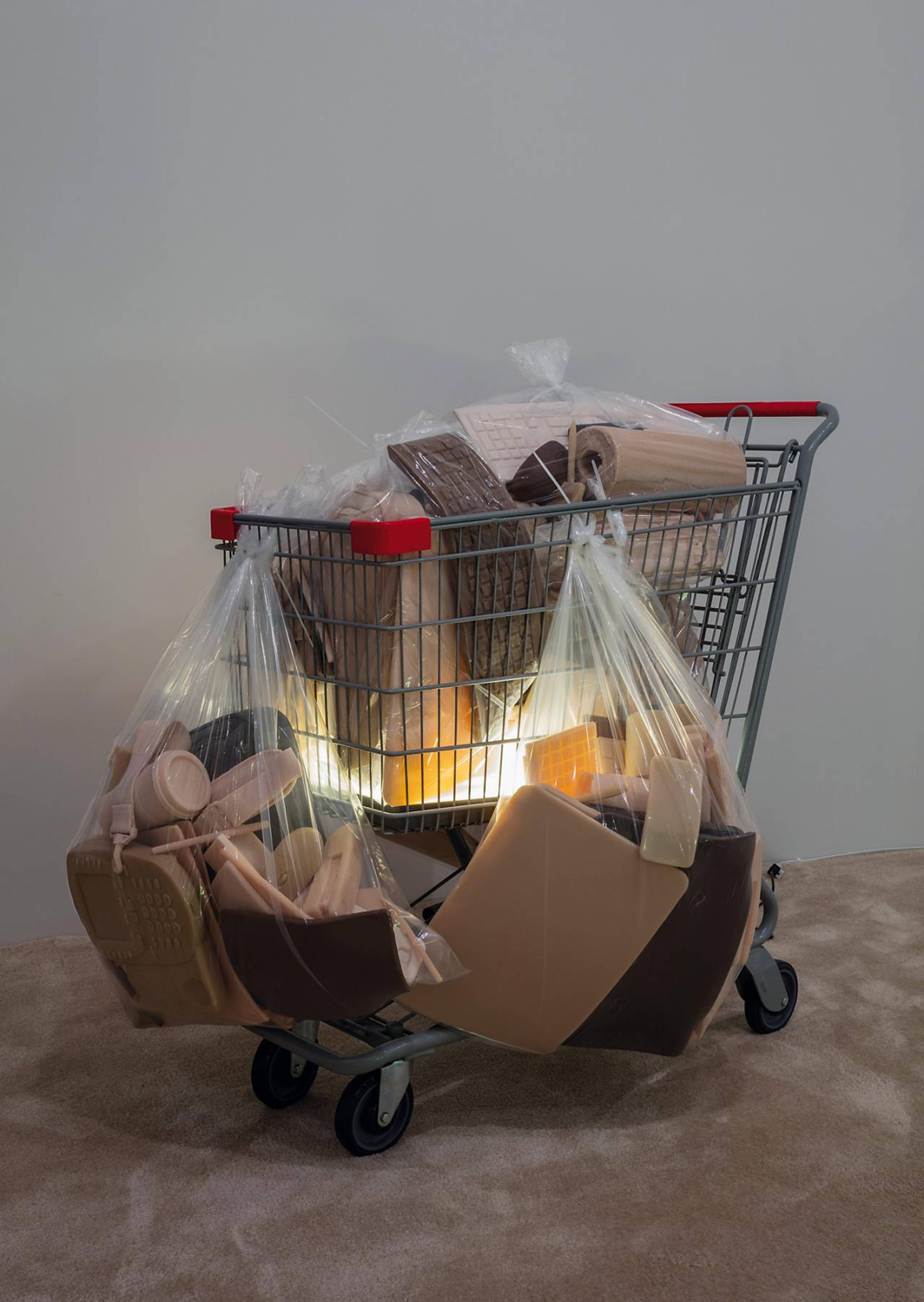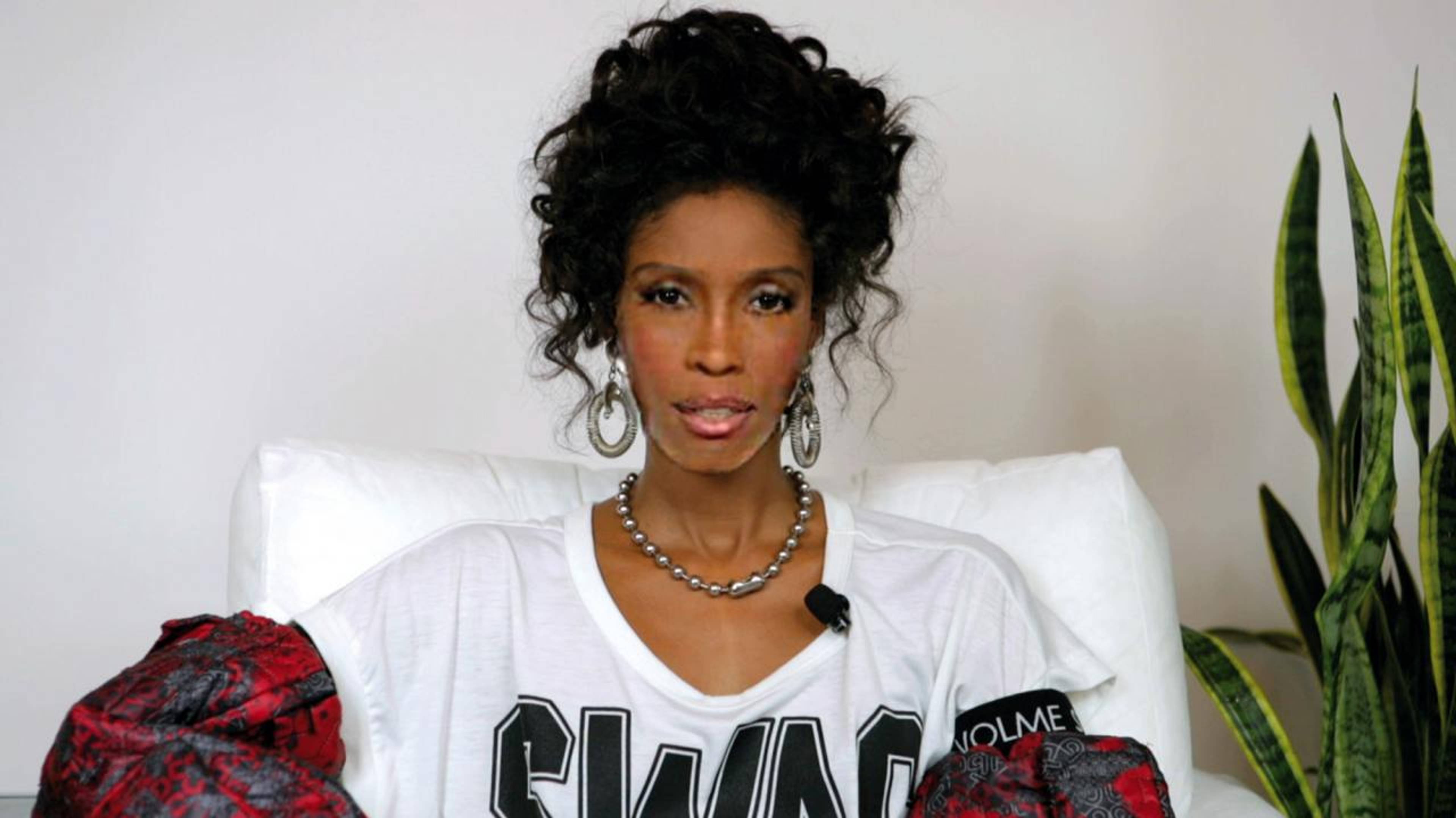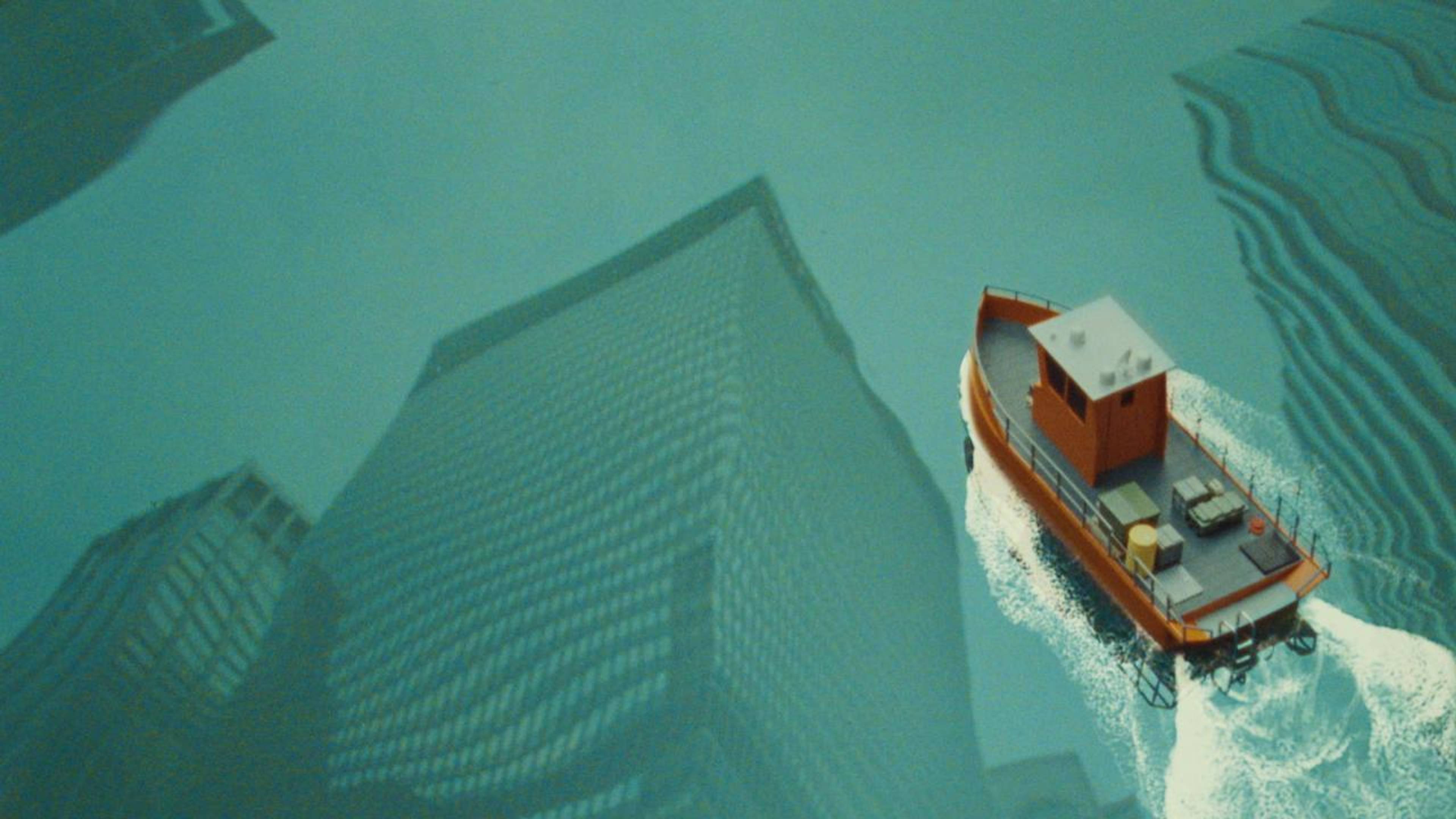When I worked in advertising, my creative director – a gay, baldheaded Australian who wore Stone Island jackets and regularly injected Botox into his crow’s feet – told me that in the world of aspirational branding, there is luxury, and then there is prestige. Luxury, often at an exorbitant price point, is for an elite connoisseurship: Prada, Cire Trudon candles, Knoll furniture. Prestige can also be expensive, but is ostensibly marketed to all: Apple, HBO, the publishing house Farrar, Straus & Giroux. Locating itself at a fetishized point of origin, luxury uses history, which is called “heritage,” to accrue signaletic value while communicating nothing. Prestige, on the other hand, aims to be autonomous from history – minimal, sleek, distinguished by standardized quality – something that could be commodified and deployed worldwide.
In a 2010 essay titled “New Century Modern,” artist Josh Kline (*1979) coins the phrase to describe a prestige aesthetic, dated to the “early 2000s,” that is “interchangeable, indispensable,” targeted for an aspirational generation traumatized by 9/11 and the collapse of Lehmann brothers, whose “career interests lay in fashion, graphic design, or IDM music.” This fluorescent glow of an Apple Genius Bar bathes the “Creative Labor” series, from 2009–14, which marks the earliest cycle of works in the artist’s mid-career retrospective at the Whitney Museum. The cycle shows two video works, Forever 48 and Forever 27 (both 2013) made with deepfake software animating fictitious interviews with Whitney Houston and Kurt Cobain, as if they had survived their respective overdoses. Nearby, the works Get the look: 2011 and Get the look: 2009 (both 2012) feature mannequins dressed in prestige brands like American Apparel and Barbour, with embedded videos playing interviews with middle-age models recruited from Craigslist. Here, the celebrity and, by extension, the model and artist, are both agent and product, optimized to be simultaneously heroic and relatable, the prototype and the ultimate dream for the neoliberal creative.
View of “Project for a New American Century,” Whitney Museum of American Art, 2023. Photo: Ron Amstutz
Kline made “Creative Labor” during a time when he worked a full-time job, and the cycle exhibits the kind of insider/outsider perspective of in-group cheekiness. In later cycles (in a retrospective not ordered chronologically), Kline turns his eye toward white- or blue-collar workers, making a decisive pivot from the expressive/satirical to a more journalistic mode. As a result, the works become less nuanced, more dour and sentimental (even the walls are painted to darker colors). The Contagious Unemployment (2016) sculptures show boxes filled with office supplies and decorations, the kind you carry out with you after you’ve just been laid off, encased in clear plastic viruses dangled in midair by a power cord. It doesn’t take a college degree to get the joke. It’s one-liner art that works as metaphor, which is either the lowest hanging fruit from the tree of hermeneutics, or, more generously, the most accessible, which can be taken as a populist gesture. Following two decades when the likes of David Joselit and Bernadette Corporation legitimized an entire generation of artists to make art about the art world, aggregate social capital as medium, “interrogate” the meaning of status objects through their circulation within a clout-saturated “community” – or simply to reflect an elite back to itself, disguised as institutional critique – Kline broke away from all that, and decisively turned outward. If his art began as immanent critique – sculpture, as a luxury object, about the mythologies of prestige objects – it changed, toward the mid-2010s, into something more humane, earnest, and explicit.
Like the plainspoken prose of Annie Ernaux’s narratives of rural France, Kline turned to making sculptures about the working class in terms that the working class could understand. The critic Domenick Ammirati wrote that Kline’s later sculptures, “blindingly clear,” have opted to “hone images that are so iconic that they resist deformation as they travel, becoming lossless rather than lossy, seeking a transmission with low noise and high signal.” Take MAO Inhibitors Can’t Fix This (Elizabeth/Administrative Assistant) (2016): a 3D-printed sculpture of a woman, curled up in fetal position, wrapped up in a plastic bag. Elizabeth, the woman the sculpture was modeled after, was laid off from her job as a church secretary because she didn’t know how to use social media; they wanted someone younger. We get the one-liner. Unlike the virus works though, Elizabeth haunts the mind with a kind of uncanny pathos. Her hands are placed across her shoulders, braced.
Josh Kline, Poverty Dilation, 2016, cast silicone, shopping cart, polyethylene bags, plastic zip tie, rubber, plexiglass, LEDs, and power cord, 114 x 102 x 127 cm. © Josh Kline. Courtesy: the artist and 47 Canal, New York
If I wanted to touch her, perhaps just to see if the 3D-printed texture would feel like flesh, the plastic bag stood in as an invisible membrane separating us as individual objects, not subjects, circulating mindlessly in a global network in which technology and non-human cognition are the true subjects of history. The bag was yet another metaphor, but the confrontation of a human face in pain, real or simulated, had an affective surplus that could not be assimilated into the visuals of the commodity.
In videos working most explicitly in the documentary mode, the “Blue Collars” (2014–20) cycle comprises straightforward interviews with workers across America. When the young woman in Applebee’s Waitress Interview (2016–18) is asked what she would do if she wasn’t a waitress, she says she wanted to be an English major – a subtly intimate detail that made me think I knew her, even though I did not. I began to make fanfiction in my head about her life. I imagined that she owned a Dell laptop, not an Apple, and that she saw the first season of Game of Thrones (2011). She might’ve voted for Biden, but her parents voted for Trump. Her favorite line in The Great Gatsby (1925) is, “Reserving judgment is a matter of infinite hope.” She definitely has not been to The Whitney.
Still from Forever 48, 2013, HD-video, sound, 16:06 min
Still from Adaptation, 2019–22, 16mm film, sound, 10:45 min. © Josh Kline Courtesy: the artist and 47 Canal, New York
___
“Project for a New American Century”
Whitney Museum of American Art, New York
19 Apr – 13 Aug 2023


